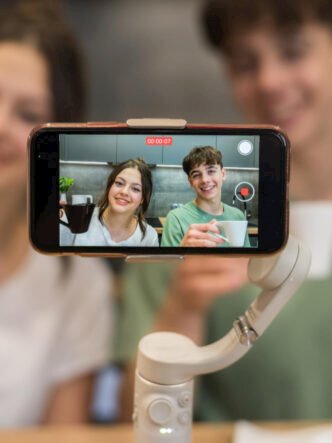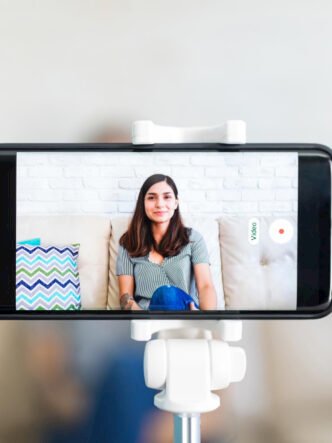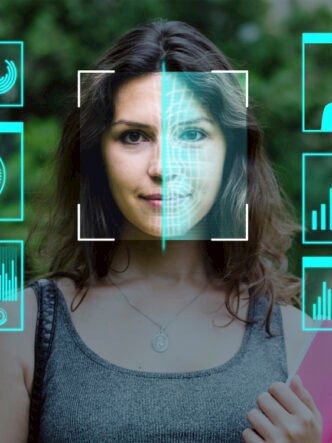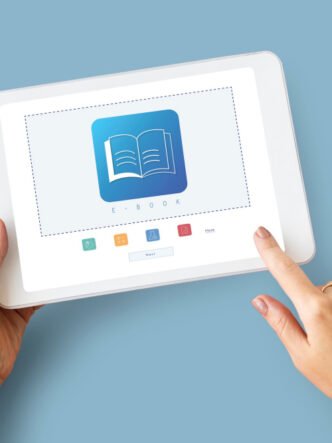In the Covid-19 pandemic, many employees had to work remotely and have continued to do so since then. A number of workplaces have now adopted a hybrid working model. This requires professionals like educators and corporate trainers to navigate the shift to hybrid learning environments.

What is hybrid learning?
Hybrid learning is a combination of in-person interaction and online instruction. It provides flexibility by combining digital and physical elements. Learners can access e-learning but still have opportunities for in-person interaction and collaboration with peers. Flexible work models ensure that businesses can retain top talent and be more competitive.
In hybrid learning video content plays a crucial role. Video-based learning offers engagement, interaction, and accessibility. The flexibility of video makes it effective for both synchronous, real-time collaboration and asynchronous, self-paced learning. It is important for educators to understand how to incorporate both in a hybrid learning environment.
How video supports hybrid learning
Hybrid learning, also called blended learning, gives learners a stimulating and adaptable learning environment that suits different learning styles.
1. On-demand video content for flexible learning
On-demand content is available to learners at all times and from any location. This gives them the flexibility to fit learning into their busy schedules. They can play, pause, and replay video content at their own discretion which helps with cognition and retention. On-demand video content allows students who can’t attend in-person classes to access lectures and learn at their own pace.
2. Live streaming for real-time engagement
Live streaming allows for real-time engagement as users can transmit and receive data. The back-and-forth communication creates a sense of immediacy and connection. An interactive live stream can be in the form of a webinar, a town hall, a Q&A, or a virtual event. With live chat, viewers can ask questions and share their opinions.
3. Video as a bridge between classroom and remote learners
Remote learning can be difficult if interpersonal elements are missing. Live streaming allows learners to see the instructor and each other which facilitates group dynamics and collaboration. It helps instructors to notice if learners aren’t engaged or don’t understand.
- Using a whiteboard to sketch diagrams can help to convey complex information.
- Animated videos provide an engaging way to simplify complex information.
- Video messaging is a quick and efficient solution that enables educators and learners to communicate online.
When instructors use videos in the classroom, they should be high in quality and relevant to learning objectives and learner interests. Online classroom engagement requires clear, concise, and entertaining videos rather than lengthy and boring ones.
Best practices for using video in hybrid learning
Using video in hybrid learning is particularly helpful for remote learners and frees up in-person class time for discussions, and other more interactive activities.
1. Pre-record lessons
Uploading pre-recorded lessons to a learning management system (LMS) allows learners to learn at their own pace. They can review the material as often as they need to for them to understand complex concepts. Remote learners can access exactly the same content as in-person learners, regardless of any time-zone differences.
A flipped classroom reverses the traditional method of teaching in class and assigning homework outside of class. This means learners don’t spend time in class sitting and taking notes while an instructor lectures them. For example, they will listen to video content outside of class and then discuss it in class.
Instructors can break down complex topics into small, manageable videos each with a clear learning objective. They are also able to carefully edit and refine pre-recorded video content.
2. Make video interactive
One of the top tools for elearning is interactive video. It changes the way learners engage. Surveys, quizzes, annotations, and other interactive features draw them in and improve their comprehension and retention.
A survey or poll provides a way for learners to give feedback which can help to improve future content. A quiz enables instructors and learners to assess progress. For example, instructors can see what learners don’t understand and provide additional resources to help them.
3. Create accessible video
Video content should be accessible to as wide a range of learners as possible. Subtitles and transcripts make them accessible to learners with hearing disabilities and foreign language speakers. Non-English speakers can read transcripts while watching videos to reinforce understanding. Subtitles help learners to understand content even in a noisy environment.

Enhance engagement in hybrid classrooms
With some learners on-site and others joining remotely through video-conferencing platforms, educators can find it difficult to keep everyone engaged.
Peer-to-peer video discussions
Educators can enhance engagement by using video technology to facilitate peer-to-peer discussions. Having some clear rules of engagement ensures that they are able to minimize disruptions, keep order, and ensure all learners can voice their opinions. Group work involving both online and in-class learners can help to break down barriers.
Use video feedback and coaching for personalized learning
Feedback from learners helps with personalizing learning. Educators can identify those who are struggling and offer additional resources. They can give quick learners access to more material.
Incorporate video quizzes and assessments
If learners know they have to complete video quizzes and assessments, they will concentrate more. They also provide an immediate feedback tool. If many learners answer incorrectly, educators may have to revisit the topic for the whole class. If they see individual learners are struggling, they can offer private help.
Overcoming challenges in hybrid learning video integration
Leveraging video content across an organization is difficult if it isn’t in one central location. Cincopa’s video hosting platform allows educators to host, store, deliver, and analyze video content in a central place. Video analytics ensure that they can gain insights to keep improving their video content.
Bandwidth and streaming concerns
Bandwidth determines the smoothness and quality of the streaming experience. Problems can arise with bandwidth limitations. A learner’s internet connection may not have the capacity to stream high-quality video smoothly. This can result in buffering, lagging, or grainy content. Adaptive bitrate streaming automatically adjusts the video quality based on the real-time network conditions of learners.
- The Cincopa platform streams content efficiently with the use of adaptive bitrate streaming to ensure smooth playback at different connection speeds.
- The Cincopa home page shows some of its technological solutions such as its content delivery network (CDN). A CDN allows it to distribute content across multiple servers worldwide. Learners can receive quality video content at speed from a server closest to them.
- Cincopa also encodes videos in multiple formats and implements responsive design techniques to adapt the video player interface to different screen sizes and resolutions.
Keeping content secure and organized
Various layers of security help to protect content. Some of these are two-factor authentication, encryption, single sign-on (SSO), domain lock, and watermarks.
Creating detailed folder structures and adding descriptive metadata to each video are some of the ways to keep them organized.
Cincopa offers strong security measures such as the ones mentioned above and promotes easy search and access to well-organized videos.
Balancing live and asynchronous learning
- Live and asynchronous learning both have benefits and challenges. Recorded learning offers consistency, and flexibility, and enables self-paced learning. It can also cause isolation and result in a lack of support.
- Live learning fosters engagement, collaboration, feedback, and personalization. Technical reliability, scheduling, and coordination are essential for live streaming.
- Balancing both can leverage their strengths and mitigate their weaknesses.
Conclusion
Hybrid learning allows educators to experiment with different teaching methods and strategies that engage learners in exciting ways and involve everyone equally. Some of the best practices in a hybrid environment include pre-recording lessons, live streaming, and making videos interactive and accessible. The Cincopa platform offers both on-demand video and live streaming to facilitate a blended learning environment. Try out a free trial now…









